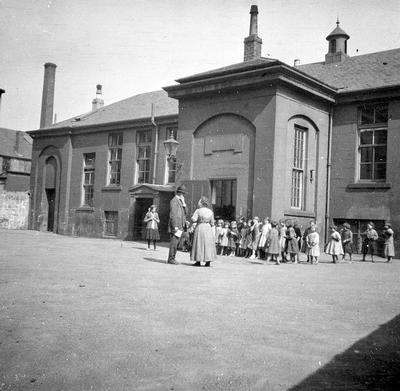
Girls lined up to go in to Green Street Industrial School, early 20th century.
The origins of the Industrial Schools lay in the "ragged schools" of the 1840s. These were charitable institutions set up across Britain to provide education for the children of the working-class poor. By the Industrial Schools Act of 1854 they came under the control of the Home Department and were specifically designated for "vagrant and homeless waifs" whose family or social circumstances were deemed to place them in danger of becoming delinquents. Industrial schools taught practical skills such as needlework for girls and bootmaking and tailoring for boys, as well as the "three Rs", intending to teach pupils basic skills that might help them find employment in later years. Pupils were required to live on the premises until Industrial Schools became day schools in 1893.
In 1932 the Industrial Schools were amalgamated with the Reformatory Schools that had been built to hold juvenile delinquents. The name Approved Schools was adopted for the amalgamated institutions that were intended for the detention and rehabilitation of young offenders.
Reference: 140.78.246
Reproduced with the permission of Glasgow City Council, Glasgow Museums
Keywords:
Approved Schools, children, education, girls, Green Street Industrial School, Industrial Schools, juvenile delinquents, playgrounds, pupils, ragged schools, Reformatory Schools, teachers, Three Rs
You have 1 image in your photo album.